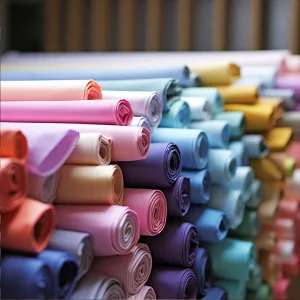Do you want to know how a polo shirt is made, from start to finish? To turn a design idea into a real product, there are important steps to follow. In this blog post, we will show you how the whole process works and why each step is important.
Step 1: Conceptualization and Design

The first phase of creating a polo shirt begins with conceptualization and design. Fashion designers and clothing brands think of ideas, follow trends, and choose the style, fit, and appearance of clothes. In this stage, designers make sketches and technical drawings. They include details like collar styles, sleeve lengths, button types, and unique features.
Step 2: Pattern Making

Pattern making is the next significant step in the production process. Experienced pattern makers use design drawings to create templates for cutting the fabric. These patterns record the measurements and proportions needed for a good-fitting polo shirt.
Step 3: Fabric Selection and Sourcing

Choosing the right fabric is vital for the success of the final garment. Designers and manufacturers select materials based on comfort, durability, breathability, and appearance. Once we choose the fabric, we buy it from trustworthy suppliers who provide excellent textiles that meet our needs.
Step 4: Sample Development and Fitting

With the pattern and fabric ready, the manufacturing process proceeds to sample development. Experienced clothing makers use the patterns to cut the fabric and sew polo shirt prototypes. After that, the samples are placed on models or mannequins to evaluate the design and make changes for the desired fit and appearance.
Step 5: Production and Manufacturing

Once we approve the sample, we begin the production phase. To make polo shirts, we cut fabric according to patterns and sew the pieces together. During manufacturing, we use quality control measures to make sure the products are made well. This helps with accuracy, consistency, and following high quality standards.
Step 6: Embellishments and Customization

Polo shirts often need different decorations and customizations to make them unique and stylish. To decorate the fabric, you can use embroideries, screen printing, dye-sublimation, or heat transfers. These methods apply logos, graphic designs, or other decorative features. These processes contribute to the individuality and brand identity of the garment.
Step 7: Quality Assurance and Inspection

Before the polo shirts are packaged, they go through thorough quality checks to make sure they’re good. We inspect every item to ensure it meets our standards for stitching, construction, print, color, and presentation. Any imperfections or discrepancies are identified and rectified to maintain a high level of quality.
Step 8: Packaging and Distribution

The final step in the journey from design drawing to finished garment is packaging and distribution. The polo shirts are folded, tagged, and packaged carefully to protect them during transportation. They are then distributed to retailers, wholesalers, or directly to customers, ready to be worn and enjoyed.
Teamwork, expertise, and attention to detail are important in every stage of making a polo shirt. Designers, pattern makers, manufacturers, and quality control specialists work together to create clothes that meet the vision and meet customers.
At Ninghow Apparel, we excel in every step of the polo shirt production process. Our team of experts takes care of everything, from creating to delivering, to guarantee excellent outcomes and service. Buy your polo shirts from Ninghow Apparel. They transform design drawings into flawless garments.














